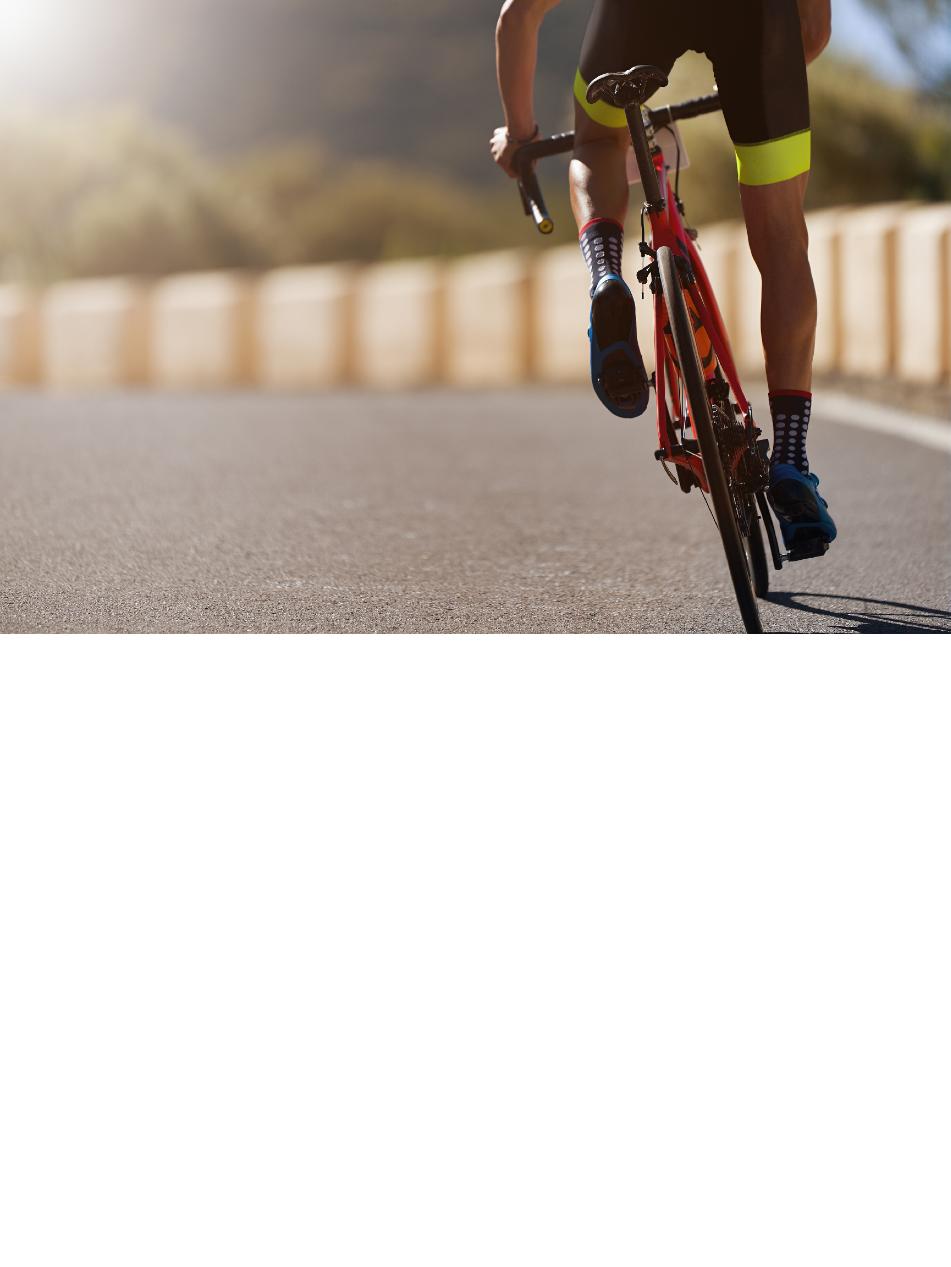
5 minute read
How do hip and ankle kinematics predict knee joint load?
French fitter and researcher Geoffrey Millour looks at a recent paper on knee joint loads as part of the regular literature review feature from the IBFI’s Scientific Sub-Committee.
Introduction:
Advertisement
The primary purpose of bike-fitting is to prevent overuse injuries by adjusting the foot, saddle and handlebar interfaces. The saddle position and the crank arm length influences the lower limb joint kinematics, which can affect knee joint reaction forces. The authors assume that a high knee flexion at bottom dead centre, which is typical of low saddle height, could increase patellofemoral reaction forces. In addition, it has been shown that a posterior saddle position (compared to traditional recommendations) increases tibiofemoral compression forces (Menard et al., 2018). Therefore, the aim of this study was to assess the effect of ankle, knee, and hip kinematics on patellofemoral and tibiofemoral joint reaction forces and identify if sex, horizontal saddle position, or crank arm length also play a role in these reaction forces during submaximal pedalling.
Methods:
Forty healthy participants (17 females and 23 males of 28.6 ± 7.2 years) with different cycling experiences were recruited for this study. First, a fit-bike was set for each participant by positioning saddle height at 109% of inseam length with an effective seat tube angle of 73.7°. The handlebar position was adjusted according to the individual's perception of comfort. All cyclists used the same saddle (Selle Royal, Seta, 143 mm width), crank arm of 172.5 mm and flat pedals with Velcro straps. Then, they used this initial position to perform an incremental cycling protocol (YMCA Sub-Maximal Cycle Ergometer Test) in order to determine the experimental exercise intensity. The pedalling cadence and power output of the last stage (when the participants achieved a heart rate of 70–75% of age-predicted maximum) were used during the following protocol. The experimental protocol consisted to ride in 18 positions during 3 min: three vertical saddle positions (initial and ± 5%), three horizontal saddle positions (initial and ± 10%) and two crank arm lengths (initial, 170 mm and 175 mm), in a random order. The handlebars were adjusted to maintain the same position relative to the saddle. A motion capture system and instrumented pedals measured joint kinematics and pedal forces, respectively. A musculoskeletal model was made in OpenSim to calculate tibiofemoral shear force, tibiofemoral compression force and patellofemoral force during the last minute of each bout. Mixedeffects models were used to assess the effects of joint kinematics of both lower limbs on the joint reaction forces.
Results:
Results show that both flexion and extension of the hip, knee and ankle affect knee joint reaction forces. The resultant patellofemoral joint reaction force was most sensitive to joint kinematics, while the tibiofemoral shear force was least sensitive. All reaction forces were least sensitive to changes in minimum knee flexion (i.e., when the lower limb was extended). The best predictors of tibiofemoral compression force were the minimum hip flexion and maximum ankle dorsiflexion. For the tibiofemoral shear force and patellofemoral joint reaction, minimum hip flexion, maximum ankle dorsiflexion, minimum knee flexion, and the interaction of minimum knee flexion and minimum hip flexion were included in the best predictive model. The inclusion of sex improved fit of all models, but it could be attributed by the difference in power output between males and females (140.4 ± 37.7 W vs. 86.4 ± 30.6 W). The crank arm length and horizontal saddle position were not related to knee joint reaction forces.
Discussion:
This study shows the importance of optimising hip, knee and ankle kinematics during flexion and extension in order to minimise knee reaction forces that can be responsible for overuse injuries. Surprisingly, the minimum hip flexion and ankle dorsiflexion were most important for predicting knee forces than minimum knee flexion, which is commonly used in bike-fitting to adjust saddle height. It appears therefore essential to study the different joint angles both during flexion and extension during bike-fitting to avoid overuse injuries. The authors' conclusion that horizontal saddle position and crank length are not related to knee reaction forces should be taken with caution. Indeed, these settings affect the kinematics, and, as they point out, the inclusion of kinematics in the models made crank arm length and horizontal position variables unimportant. Additionally, the most practical way to limit joint forces by limiting both flexion and extension is to use shorter cranks. It is from this postulate that I studied the use of asymmetrical cranks as an alternative to spacers placed between the shoe and the cleat for cyclists presenting an asymmetry of the lower limbs (Millour et al., 2020). This adaptation, which consists of reducing both extension and flexion of the short lower limb, had shown encouraging results. The influence of sex seems irrelevant, but as the authors point out once again, it is exercise intensity that can significantly affect knee reaction forces. Therefore, the more you pedal at high intensity, the greater the risk of developing pathologies. The use of flat pedals and of an identical saddle for all cyclists, without adaptation time, can be considered as the main limitations of this study. In addition, it would have been interesting to take into account the flexibility of cyclists which can have an impact on the tolerable joint flexion and extension during pedalling. Despite these limitations, this study presents interesting and original results with practical applications for bike-fitting professionals.
*Hip and ankle kinematics are the most important predictors of knee joint loading during bicycling, Gatti, A. A., Keir, P. J., Noseworthy, M. D., Beauchamp, M. K., & Maly, M. R. (2021), published in Journal of Science and Medicine in Sport , 24(1), 98-104.

